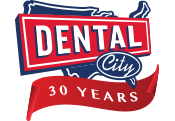Let’s be honest. A lot of the new bells and whistles companies tout their toothpastes have are mostly driven by marketing. They add the features that sell.
Like a whiter smile. Whitening toothpastes are all the rage these days.
And while no two mouths are identical and most likely will benefit from various kinds of toothpastes (a toothpaste with fluoride is often a good choice), if you’re not brushing properly the best toothpaste in the world won’t be enough to give you a healthy mouth.
At the end of the day, it’s the friction of the toothbrush against your teeth that removes plaque. So, instead of loading up your toothbrush with paste, take a small amount and really pay attention to what you’re doing. Make sure to brush against the whole surface of each of your teeth to ensure you’re scraping away the plaque and food debris that can lead to tooth decay.
But (there’s always a but, right?) that doesn’t mean you should be attacking your teeth with your brush either. Too much pressure can harm your gums and cause sensitivity. Moderate pressure is key. That way, you can combine the toothpaste you like best with good brushing for optimal dental health.
Here’s a breakdown of proper brushing technique:
- Brush at least twice a day (getting the obvious one out of the way)
- Replace your toothbrush every 3 months
- Brush for two minutes
- Brush at a 45-degree angle to your gums
- Move the brush in short strokes
- Move from one side of your mouth to the other, making sure to reach every tooth
- Brush the top or bottom and sides of teeth and behind your front and back teeth
- Brush your tongue to remove bacteria and avoid bad breath
And if a video is more your style (that 45-degree angle part might be best learned with a visual), be sure to watch the one above!

